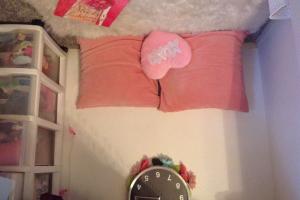Crafting Your Secret Hideout: A Complete Guide to Building a Cozy Retreat in Your Closet

-
Quick Links:
- Introduction
- Why Create a Hideout?
- Choosing the Right Closet
- Designing Your Hideout
- Decorating Your Hideout
- Utilizing Space Efficiently
- Case Studies: Real-Life Hideouts
- Expert Insights on Creating Personal Spaces
- Step-by-Step Guide to Build Your Hideout
- FAQs
Introduction
In a world where privacy and personal space are often hard to come by, the idea of creating a secret hideout in your closet is both appealing and practical. Whether you need a little nook to escape the daily grind, a creative space for your hobbies, or a cozy reading corner, a closet hideout can provide the perfect sanctuary. This guide will walk you through the entire process of transforming an ordinary closet into your dream hideout.
Why Create a Hideout?
Creating a hideout offers numerous benefits, including:
- Privacy: A personal space to unwind without interruptions.
- Creativity: A designated area for hobbies and projects.
- Organization: A clutter-free environment that helps you stay organized.
- Stress Relief: A retreat that promotes relaxation and mindfulness.
Choosing the Right Closet
Not all closets are created equal. When selecting a closet for your hideout, consider the following:
- Size: Ensure the closet has enough space for your intended use.
- Location: A closet in a quiet area of your home is ideal.
- Accessibility: Make sure you can easily access your hideout whenever needed.
Designing Your Hideout
Once you've chosen the right closet, it's time to design your hideout. Here are some design elements to consider:
- Layout: Plan the layout based on your activities (reading, crafting, etc.).
- Lighting: Add fairy lights or a small lamp for ambiance.
- Seating: Incorporate a comfy chair or cushions for relaxation.
Decorating Your Hideout
Personalize your space with decorations. Here are some ideas:
- Wall Art: Hang your favorite posters or prints.
- Textiles: Use throw blankets and pillows for comfort.
- Plants: Add small plants for a touch of nature.
Utilizing Space Efficiently
Make the most out of your hideout by maximizing storage and functionality:
- Vertical Storage: Use shelving to store books and supplies.
- Multi-Purpose Furniture: Consider furniture that doubles as storage.
- Decluttering: Keep only what you need to avoid clutter.
Case Studies: Real-Life Hideouts
Let's explore some inspiring examples of closet hideouts:
Case Study 1: The Book Nook
Avid reader Sarah transformed her small closet into a cozy “book nook” with bookshelves, a comfortable chair, and soft lighting. This space allows her to escape into her literary world.
Case Study 2: The Creative Studio
Artist Mark turned his closet into a mini-studio filled with art supplies and a small desk. The enclosed space helps him concentrate on his creative work without distractions.
Expert Insights on Creating Personal Spaces
According to interior designer Jane Smith, "Creating a personal hideout is not only about aesthetics but also about functionality. A well-planned space can significantly enhance your productivity and well-being."
Step-by-Step Guide to Build Your Hideout
Now that you have the ideas, here’s a detailed step-by-step guide:
Step 1: Clear Out the Closet
Start by removing everything from the closet to have a clean slate.
Step 2: Assess the Space
Measure the dimensions of the closet to plan your layout effectively.
Step 3: Plan Your Design
Sketch a layout of your hideout, considering seating, lighting, and storage.
Step 4: Add Lighting
Install overhead lighting or add lamps to brighten the space.
Step 5: Install Shelving
Add shelves for books, supplies, or decorative items.
Step 6: Furnish Your Hideout
Choose comfortable seating and add pillows or blankets for coziness.
Step 7: Decorate
Personalize your hideout with decorations that reflect your style.
Step 8: Organize
Utilize storage solutions to keep your hideout tidy and functional.
Step 9: Enjoy Your Space
Finally, take time to enjoy your new hideout!
FAQs
1. Can I create a hideout in any type of closet?
Yes, but larger closets provide more flexibility for design and functionality.
2. What are the best materials for a closet hideout?
Soft furnishings like cushions, shelves for storage, and good lighting are essential.
3. How can I make my hideout soundproof?
Consider adding soundproofing materials like foam panels or thick curtains.
4. Is it expensive to create a hideout?
Costs can vary greatly; budget options are available, depending on your design choices.
5. Can kids have a hideout in their closets?
Absolutely! A closet can be a fun play area for kids with proper safety measures.
6. How do I maintain my closet hideout?
Regularly declutter and keep the space organized to maintain functionality.
7. What if my closet doesn’t have a door?
You can use curtains or room dividers for privacy and a cozy feel.
8. Can I use my hideout for work?
Yes, many people use closet hideouts as quiet workspaces.
9. How can I ensure my hideout is comfortable?
Focus on soft seating, good lighting, and personal touches that make the space inviting.
10. What are some creative themes for a closet hideout?
Consider themes like a reading nook, art studio, or meditation space.
Random Reads